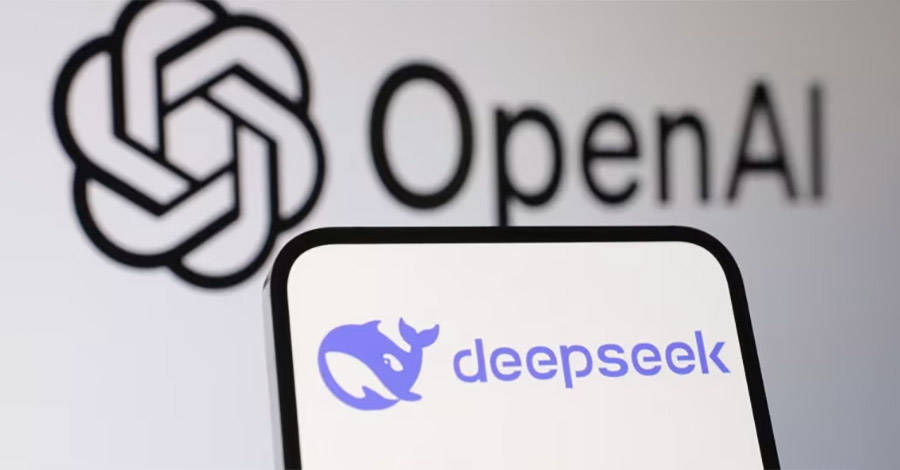AI Wars: The Rise of DeepSeek and the Battle for Intelligence
What if the future of AI wasn’t controlled by billion-dollar tech giants but by a revolutionary startup that built a powerful AI on a shoestring budget? DeepSeek has just shaken the industry, proving that cutting-edge AI doesn’t have to cost billions. As it challenges giants like ChatGPT, Gemini, and Grok, one question arises—are we witnessing the beginning of a new AI era?
Read on to discover how DeepSeek is rewriting the AI rulebook.
In recent years, the landscape of artificial intelligence (AI) has been transformed by the emergence of advanced language models capable of understanding and generating human-like text. These AI systems have revolutionized various industries, from customer service to content creation. Among the notable players in this field is DeepSeek, a Chinese AI startup that has recently garnered significant attention.
The Rise of DeepSeek
DeepSeek, founded by Liang Wenfeng, has disrupted the AI industry with its innovative approach. On January 20, 2025, the company launched DeepSeek-R1, an AI model that stands out for its open-source nature and cost efficiency. Unlike many Western counterparts that have invested billions into AI development, DeepSeek developed its model with a budget of just $5.58 million. This achievement has not only showcased China’s advancing capabilities in AI but has also challenged the traditional economics of the tech industry.
The impact of DeepSeek-R1 was immediate and profound. Major tech companies, particularly those in the AI sector, experienced significant market value declines. For instance, Nvidia’s valuation dropped by $600 billion in a single day following the release.
DeepSeek’s model, which is open-source and distributed under the permissive MIT license, encourages global experimentation and adaptation, further amplifying its influence.
Comparing Leading AI Language Models
Let’s see the list of AI models and their developer with their unique feartures.
The AI landscape is populated with several advanced language models, each with unique features and capabilities. Here’s a comparison of some of the most prominent:
| AI Model | Developer | Key Features | Notes |
|---|---|---|---|
| ChatGPT | OpenAI | Advanced reasoning, extensive training data | Known for its deep understanding and generation of human-like text. |
| DeepSeek-R1 | DeepSeek | Open-source, cost-effective, efficient performance | Developed with a focus on accessibility and efficiency, challenging traditional AI development models. |
| Grok | X Corp (Elon Musk) | Humorous responses, image generation | Accessible on the X platform, integrates unique features like image generation of public figures. |
| Gemini | Impressive image recognition, seamless integration | Demonstrates strong capabilities in image recognition, though it avoids political topics. | |
| Claude | Anthropic | Safety-focused, human-like interactions | Developed by former OpenAI employees, emphasizes safety and ethical considerations. |
| Meta AI | Meta (formerly Facebook) | Open-source, effective common sense reasoning | Stands out for its ability to address common sense questions effectively. |
Each of these models contributes uniquely to the AI ecosystem, catering to different user needs and preferences. The emergence of models like DeepSeek-R1 highlights the rapid advancements in AI technology and the increasing accessibility of powerful tools to a global audience.
The Implications of DeepSeek’s Emergence
DeepSeek’s entry into the AI market signifies a pivotal shift. Its ability to develop a powerful AI model at a fraction of the cost incurred by Western tech giants challenges existing paradigms. This development suggests that high-quality AI can be achieved with more efficient resource utilization, potentially democratizing access to advanced AI technologies.
Moreover, DeepSeek’s open-source approach fosters a collaborative environment, encouraging developers worldwide to experiment, adapt, and build upon its model. This openness could accelerate innovation and lead to diverse applications across various sectors.

Conclusion
The AI landscape is rapidly evolving, with new entrants like DeepSeek challenging established norms and pushing the boundaries of what’s possible. As AI continues to integrate into various aspects of society, the emergence of diverse models enhances the richness and applicability of AI technologies, promising a future where advanced AI is more accessible and versatile than ever before.
With AI models like DeepSeek-R1 challenging industry norms, do you think open-source AI will dominate the future, or will tech giants maintain their stronghold? Let’s discuss.
